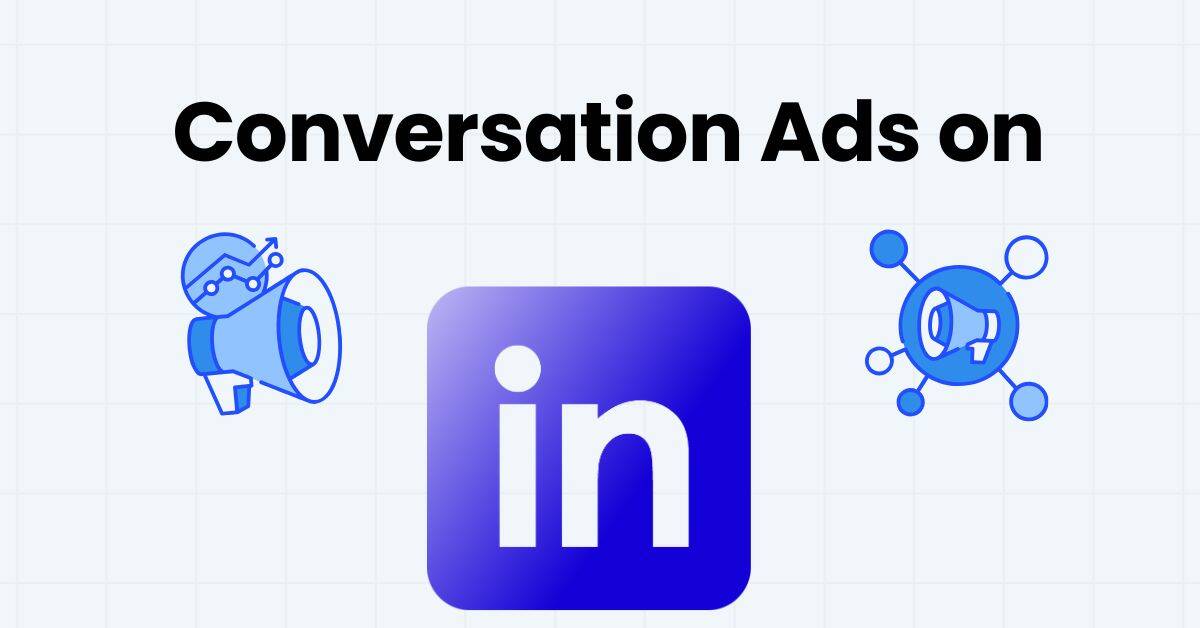Why Traditional Outreach Doesn’t Always Cut It
Let’s face it—cold outreach isn’t what it used to be. Between crowded inboxes, spam filters, and the general reluctance to “hop on a quick call,” your average B2B buyer is harder to pin down than ever. You may have the right target list, a compelling product, and even decent engagement on your site—but sales cycles are still dragging out.
Often, the issue isn’t what you’re offering. It’s how you’re starting the conversation.
This is where LinkedIn Conversation Ads can make a real impact. Instead of pushing people toward a gated whitepaper or a generic landing page, you’re engaging them directly, through a message that feels one-to-one, not one-to-many.
What Makes Conversation Ads So Effective
Unlike traditional Sponsored Content or display ads, Conversation Ads mimic something we’re all familiar with: a direct LinkedIn message. That makes them more immediate, less intrusive, and easier to engage with. Plus, you’re giving people a choice—whether they want to learn more, book a demo, or browse a resource—rather than just sending them to a single CTA.
Here’s why they work:
- They show up directly in the user’s inbox
- They feel personalised, especially when you use dynamic fields like first name or company
- They offer a conversational flow with multiple response paths
- They’re mobile-friendly and frictionless
That’s not just clever design—it’s psychology. When people feel like they’re in control of the interaction, they’re more likely to take the next step.
Turning Cold Prospects Into Curious Buyers
Let’s take a typical example. You’re marketing a SaaS platform to mid-sized finance teams. You’ve run brand awareness campaigns. Maybe you’ve captured a few leads through ebooks or webinars. But now you want to push those leads toward a discovery call—and your email cadence just isn’t doing the job.
A well-structured Conversation Ad could begin like this:
“Hi Sarah, I wanted to share a 2-minute guide we created for finance leaders looking to simplify month-end reporting. Would you be interested in seeing how other finance teams are automating the process?”
Now give her options:
- “Yes, show me the guide”
- “Book a quick demo”
- “Not right now”
Each response becomes a signal. And when integrated with your CRM, these signals can feed into your broader nurture journey. Suddenly, Sarah’s no longer just a cold name on a list—she’s someone who’s actively engaged with your brand.
Creating Conversation Flows That Convert
The key to success with this format isn’t writing a pitch—it’s structuring a conversation. Think of it like building a chatbot experience, where each option moves the user toward something more useful (for them) and more actionable (for you).
Here’s a quick structure:
- Open with relevance – Acknowledge who they are and why you’re reaching out.
- Offer value upfront – Provide something genuinely helpful (a tool, checklist, case study).
- Give clear choices – Let them guide the next step—don’t corner them with a hard sell.
- End with a low-friction CTA – “Book a time” or “Watch a quick demo video” works better than “Let’s connect.”
This approach not only improves engagement but also helps sales teams prioritise follow-ups. Leads who interact with multiple steps are clearly more interested than those who opt out early.
Where Most Conversation Ads Go Wrong
A common misstep? Making them too promotional. Just because you’re in someone’s inbox doesn’t mean you have their full attention. If your first message reads like a brochure or a cold sales email, they’ll ignore it.
Another issue is skipping the segmentation. A Conversation Ad aimed at CFOs will flop if it talks about day-to-day software features. Likewise, a message meant for IT managers shouldn’t open with marketing jargon. Tailoring the copy to job title, industry, and company size makes a big difference.
Following the best practices for LinkedIn ads, especially for Conversation Ads, means treating it less like an ad and more like a dialogue. Keep it short, keep it helpful, and keep it specific.
Why Warm Leads Are More Than Just Easier Wins
What’s often overlooked is that warm leads don’t just convert faster—they convert better. They’re more prepared, more qualified, and more likely to close with less resistance. Conversation Ads help create these kinds of leads because they meet people on neutral ground—no forms, no friction, just a choice to learn more when they’re ready.
For teams trying to shorten sales cycles, this shift can be transformative. Instead of chasing people who downloaded a PDF three months ago, you’re talking to someone who just clicked “Book a Call” after engaging with your ad in a meaningful way.
Also Read, Benefits of a Digital Marketing Strategy
Final Thought: Stop Pushing, Start Conversing
There’s a time and place for lead gen forms, long-form content, and landing pages. But when your pipeline needs a jolt—and you need to move faster without being aggressive—Conversation Ads offer a more modern approach. They’re flexible, they’re personal, and when executed well, they quietly outperform many of the louder tactics in your mix.
If you’re serious about warming up your leads before sales even steps in, it might be time to stop pitching and start messaging.
